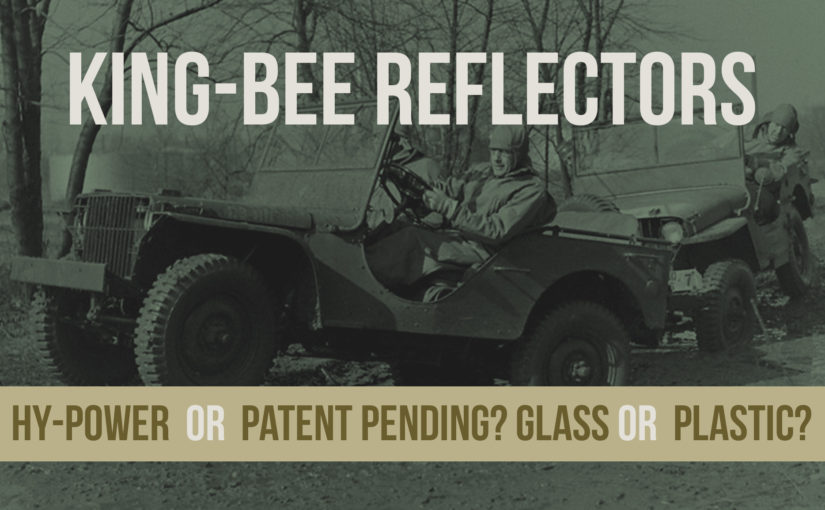There has been much information offered on this subject over recent times, some informative, constructive and historically correct, unfortunately some has been incorrect. We will attempt to provide sustainable data thus allowing the end user to make their own decision in an informed manner.
The questions are:
- Should the King-Bee reflector lens be marked “King-Bee Pat Pending” or “King-Bee Hy-Power”.
- Should the reflector lens be glass or plastic?
I have owned four (4) GP’s over the past 40 years and the first was by today’s standards a reasonably complete and original GP and it was fitted with “King-Bee Pat Pending” reflectors. An approach was made to various individuals well known in the trade, in the USA and the UK and they kindly provided original samples from their collections.
From the UK, a used and a NOS example and they were clearly marked “King-Bee Pat Pending”. Then a couple of well-known USA based GP restorers provided examples including those taken from original GP’s and the glass is clearly marked “King-Bee Pat Pending” whereas another appears to have no markings at all. There has been comment that because the patent approval date preceded the GP production dates “King-Bee Pat Pending” could not have been used by Ford. Original samples clearly show this belief to be incorrect.
Consideration might well be given to the huge buying power and indeed volume purchasing principles of Ford who apart from using King-Bee reflectors on GP’s were also using them on other Ford Trucks. It is reasonable to assume Ford would hold large stocks as would Dodge, another substantial vehicle manufacturer using King-Bee reflectors. The “King-Bee” manufacturer being involved in volume production would themselves have stock to rotate before new molds were produced and production of “King-Bee Hy-Power” put into effect.
One can conclude that both “King-Bee Pat Pending” and or “King-Bee Hy-Power” were used on GP’s and many other Ford and Dodge trucks. One should also be aware that there are two distinctly different “King-Bee Hy-Power” markings on such lenses and there is no evidence as to production dates.
There is no such thing as a Ford GP or Dodge reflector, just a commercial reflector purchased from external vendors and used by those manufacturers. The lenses were glass, plastic lenses were never used and are totally incorrect. An aluminum reflector plate and cork cushioning ring were installed during assembly.
Restorers should be aware that the mounting holes sizes were different for various vehicle manufacturers, the Ford GP used #10 size round head screws whereas the Dodge trucks used larger #12 screws so the holes in the Bezel will vary.
The choice of which reflector to use is clearly up to the individual and their decision will reflect their own preferences or interpretation of the data available and the quality of the reflector assembly on offer.
Happy restoring,
Darcy Miller


the reflectors on my GPA 5236 are of some sort of plastic material, as it came from the factory,then to camp blanding in florida, I am the 3rd owner, and till the GPA was worked on in the early 60s, those reflectors were never off that vehicle they are still there, and one of those might have an F stamped on it I acquired it for 400 USD, I also have an original GPA main Harness N.O.S, Also purchased a complete GPA wiring Package from your co a few years back, You have some excellent parts for all that would like to restore their MB,GPW etc, both of my older brothers served in the US Navy in the Pacific in WWII and said Australia was a Great Place to visit after days at sea.